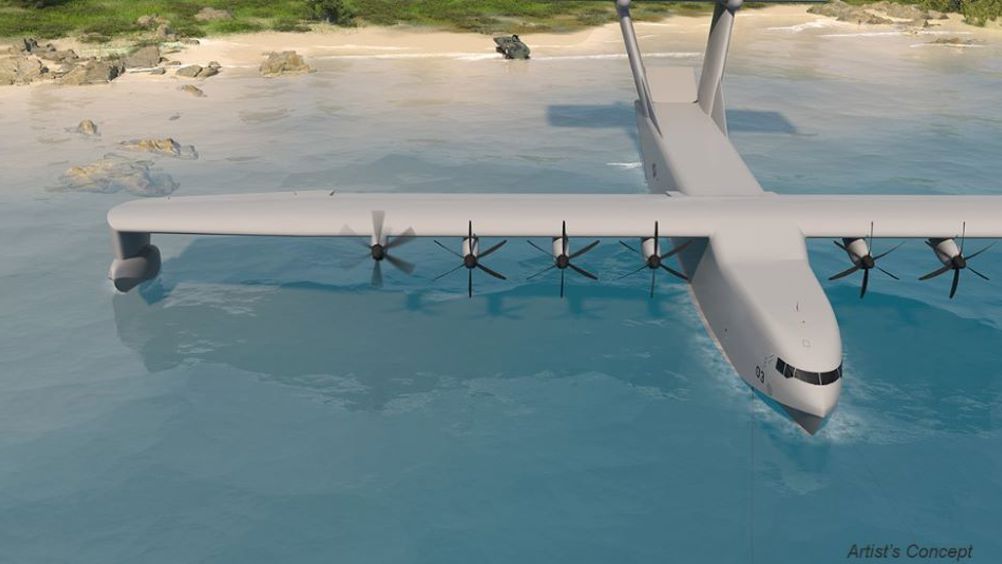Liberty Lifter X-plane moves towards preliminary design
Efforts to build the Liberty Lifter - an X-plane that demonstrates heavy-air-lift capability from the sea - is progressing toward a preliminary design.

Aurora Flight Sciences said it is progressing through Phase 1B of the project, a Defense Advanced Research Projects Agency (DARPA) program to design, build, float, and fly the aircraft.
To meet heavy-air-lift capability from the sea the vehicle will operate efficiently in ground effect at high sea states and demonstrate affordability using low-cost manufacturing and unique design features.
Virginia-headquartered Aurora Flight Sciences added that a major focus during Phase 1B is testing for risk reduction. ReconCraft, an Oregon-based shipyard, will build full-scale structural test articles, including a portion of the fuselage.
The Aurora team also tested a scale model of the hull in the tow tank at Virginia Tech, which offers a unique capability to study the slamming of craft during landing. Upcoming testing includes flying sensors and software for wave detection and prediction, which will feed the X-plane’s advanced control system for safely flying in ground effect over high sea states.
Register now to continue reading
Thanks for visiting The Engineer. You’ve now reached your monthly limit of news stories. Register for free to unlock unlimited access to all of our news coverage, as well as premium content including opinion, in-depth features and special reports.
Benefits of registering
-
In-depth insights and coverage of key emerging trends
-
Unrestricted access to special reports throughout the year
-
Daily technology news delivered straight to your inbox










Water Sector Talent Exodus Could Cripple The Sector
Well let´s do a little experiment. My last (10.4.25) half-yearly water/waste water bill from Severn Trent was £98.29. How much does not-for-profit Dŵr...